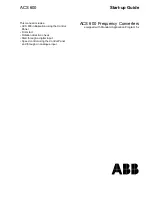
Installation and Operation Manual (Rev B)
12
The ambient temperature must be between –25
o
C and +50
o
C for full power and continuous
operation. The inverter will automatically reduce power or may shut down to protect itself if
ambient air temperature is outside the normal operating range of –25
o
C to 50
o
C.
The National Electrical Code (NEC) requires the inverter to be connected to a dedicated circuit
and no other outlets or device may be connected to this circuit. See NEC Articles 690 and 705.
The NEC also imposes limitations on the size of the inverter and the manner in which it is
connected to the utility grid. See NEC Articles 690 and 705 for guidance within the US.
The cooling air exhausts are at the left, right and back of the inverter. As the air intake is
below the inverter section of the unit, there should be at least 24 inches of clear space at the
bottom of the enclosure. Air should be able to flow all around the unit for proper ventilation.
It is also recommended to have at least 12 inches of clearance on the left and right sides. Air
should be able to flow behind the unit from below it to above it. See figure 3.3 for details.
A minimum distance of 12 inches must be clear above the inverter for ventilation.
If you are installing the inverter in a utility vault or electrical closet, the air circulation must be
sufficient for heat dissipation. Provide external ventilation to maintain an ambient condition
of 50
o
C or less for full power. The ambient temperature should be kept as low as possible at
all times for optimal inverter operation and life.
3. Inverter Mounting
WARNING:
Any lifting or moving of the inverter requires
at least
two people.
Moving of the crate/pallet requires
at least
three people.
3.1 Checking for Shipping Damage
The inverter is thoroughly checked and tested rigorously before it is shipped. Even though it is
packed in a crate and pallet for delivery, the inverter can be damaged during shipping by poor
handling, trucking or transfer station activity.
Please inspect the inverter thoroughly after it is delivered. If any damage is seen, immediately
notify the shipping company to make a claim. If there is any question about potential shipping
damage, contact Solectria Renewables. Photos of the damage will be helpful in documenting
potential shipping damage.
Do not accept the unit if box or pallet is visibly damaged or if you note visible damage when
signing shipping company receipt.
Note damage on shipping papers with the truck driver. Report damage immediately to the
shipping company.
Do not remove the unit from pallet/packaging if damage is evident.
If it is determined that the unit must be returned, a RMA number must be obtained from
Solectria Renewables prior to shipping the unit back.













































